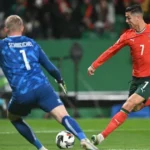Hey there, football fans! Imagine the roar of a packed stadium in Buenos Aires, the air thick with anticipation as two South American giants prepare to lock horns. On one side, the reigning world champions, Argentina, with their dazzling playmakers and unyielding spirit. On the other, the resilient underdogs from Bolivia, ready to pull off one of those magical upsets that make soccer so addictive. That’s the scene we’re setting for the upcoming CONMEBOL World Cup qualifier between the Argentina National Football Team and the Bolivia National Football Team. As of November 3, 2025, this match isn’t just about three points—it’s a battle for pride, positioning, and a ticket to the 2026 World Cup in North America.
If you’re new to the beautiful game or just love a good story on the pitch, stick around. I’m going to break this down like we’re chatting over a cup of mate: simple, engaging, and full of that human passion that turns a game into a memory. We’ll talk history, the stars who light up the field, predicted lineups in a handy table, and what might unfold when the whistle blows. No jargon overload—just pure football love. Let’s kick off!
The Storied Rivalry: A History of Highs, Lows, and Epic Goals
Football in South America isn’t just a sport; it’s woven into the fabric of life. For Argentina and Bolivia, their head-to-head battles stretch back decades, painting a picture of dominance with flashes of defiance. Argentina, often called La Albiceleste (The White and Sky-Blues), has long been the big brother in this matchup. They’ve racked up an impressive record, winning around 80% of their encounters against Bolivia. In the last eight meetings alone, Argentina claimed victory seven times, with Bolivia sneaking just one win. Draws? Rare as a quiet night in Buenos Aires—zero in that stretch.
Think about the goals: Argentina has netted 26 in those recent clashes, while Bolivia managed only four. It’s like watching a symphony where one orchestra plays the lead melody, but every now and then, the understudy steals the show. Bolivia’s sole triumph came in a gritty 2-1 upset back in 2009 during World Cup qualifying, a moment that still echoes in La Paz’s high-altitude haunts. High altitude, by the way, is Bolivia’s secret weapon—games there are tougher than climbing the Andes, thanks to the thin air that leaves opponents gasping.
These matches often fall under the CONMEBOL umbrella, the tough South American qualifying grind for the World Cup. It’s a round-robin affair where every point counts, and home advantage is king. Argentina, playing at sea level in the iconic Estadio Monumental, loves turning these into goal fests. But Bolivia, under coach Antonio Carlos Zago, has been punching above their weight lately. They’ve climbed to sixth in the standings with recent wins over Colombia and Venezuela, dreaming of their first World Cup berth since 1994. Argentina, led by Lionel Scaloni, sits atop the table with 22 points from 10 games—unbeaten at home and hungry to extend their streak.
What makes this rivalry tick? For Argentines, it’s about asserting supremacy; for Bolivians, it’s survival and glory. Past qualifiers have seen scorelines like Argentina’s 5-0 thrashing in 2020 or a more modest 1-0 in 2021. But remember 1993? Bolivia stunned the world by qualifying for the USA ’94 tournament, beating Brazil along the way. Moments like that remind us: in football, hope is the equalizer.
Spotlight on Argentina: The World Champions’ Machine
Let’s talk Argentina first—they’re the team everyone wants to beat right now. Fresh off their 2022 World Cup triumph in Qatar and back-to-back Copa America crowns, La Albiceleste is a well-oiled machine. Scaloni’s squad blends grizzled veterans with young guns, all fueled by an unbreakable team ethic. At the heart of it? Lionel Messi, the 38-year-old maestro who’s scored more goals against Bolivia (eight!) than any other opponent. Even at his age, Messi’s vision and free-kick wizardry can unlock any defense.
The defense is rock-solid, anchored by captain Nicolás Otamendi and the tenacious Cristian Romero. Goalkeeper Emiliano “Dibu” Martínez, the penalty-saving hero from Qatar, brings that larger-than-life energy. In midfield, Enzo Fernández and Alexis Mac Allister dictate the tempo like conductors, feeding balls to forwards who finish with clinical precision. Up top, Julián Álvarez’s pace and Lautaro Martínez’s poaching make them a nightmare duo.
Argentina’s style? Fluid, attacking football with quick transitions. They’ve scored 28 goals in qualifiers while conceding just eight—stats that scream dominance. But it’s not all smooth sailing. Injuries have tested their depth, with stars like Paulo Dybala and Alejandro Garnacho sidelined at times. Still, Scaloni rotates smartly, keeping legs fresh for big games. This November clash at home? Expect fireworks. Argentina’s unbeaten run in Buenos Aires stretches back years, and with World Cup spots on the line, they’ll come out swinging.
Fun fact for the kids reading: Messi’s got more assists than most teams’ total goals. He’s not just a player; he’s a legend who makes 10-year-olds dream of dribbling past defenders in the backyard.
Bolivia’s Bold Charge: Underdogs with Altitude Attitude
Now, shift gears to Bolivia—La Verde (The Green), the highlanders who thrive on defiance. Qualifying for the World Cup feels like a distant dream, but under Zago, they’re turning heads. Sitting sixth with 15 points, they’ve won four of their last six qualifiers, including that famous 1-0 over Colombia. Away from the oxygen-rich La Paz, where they bully teams at 3,600 meters above sea level, Bolivia struggles—but they’ve got grit.
Their strength? A compact defense and counter-attacks that sting. Goalkeeper Carlos Lampe is a wall between the sticks, while center-backs like Luis Haquin and Gabriel Suárez form a no-nonsense backline. Midfield maestro Ramiro Vaca pulls strings, and young forward Miguel Terceros, just 20, is the breakout star. He’s got pace, skill, and that fearless streak—scoring the winner against Colombia with a cool finish.
Bolivia’s game plan against Argentina? Park the bus early, frustrate the midfield, and hit on the break. They’ve improved their youth setup, churning out talents like Moisés Paniagua, who dazzles with tricks that rival Messi’s. Off the pitch, Bolivian fans bring color and chants that rival Europe’s ultras. Sure, they’ve conceded 22 goals in qualifiers, but their attack has nine—proof they’re evolving.
For any age, Bolivia’s story is inspiring: it’s about heart over horsepower. Remember their 1994 World Cup run? They drew with Spain and nearly upset Germany. That spirit lives on, making every match a potential fairy tale.
Argentina National Football Team vs Bolivia National Football Team Lineups: Who’s Starting and Why It Matters
Ah, the lineups—the beating heart of any match preview. Picking the starting XI is like choosing your dream team for a backyard kickabout, but with higher stakes. Based on recent form, injuries, and tactical tweaks, here’s what we expect for November 3, 2025. Argentina sticks to their trusted 4-3-3, emphasizing width and creativity. Bolivia opts for a pragmatic 4-2-3-1, balancing defense with quick breaks.
I’ve put it all in a clear table below. Positions are straightforward: GK for goalkeeper, DF for defenders, MF for midfielders, FW for forwards. Substitutes can change everything, but these are the predicted starters. Easy to scan, right?
| Position | Argentina Player | Age | Club | Key Strength | Bolivia Player | Age | Club | Key Strength |
|---|---|---|---|---|---|---|---|---|
| GK | Emiliano Martínez | 32 | Aston Villa | Penalty hero, commanding presence | Carlos Lampe | 38 | Always Ready | Shot-stopping, experience |
| DF (RB) | Nahuel Molina | 27 | Atlético Madrid | Overlapping runs, crosses | Santiago Echeverría | 25 | Bolívar | Speed, tackling |
| DF (CB) | Cristian Romero | 27 | Tottenham Hotspur | Aerial duels, recovery speed | Luis Haquin | 29 | Independiente | Physicality, headers |
| DF (CB) | Nicolás Otamendi | 37 | Benfica | Leadership, positioning | Gabriel Suárez | 31 | Always Ready | Interceptions, calm under pressure |
| DF (LB) | Nicolás Tagliafico | 32 | Lyon | Work rate, deliveries | Marvin Bejarano | 31 | Bolívar | Defensive solidity, stamina |
| MF (CM) | Rodrigo De Paul | 31 | Atlético Madrid | Box-to-box energy, vision | Ramiro Vaca | 26 | Bolívar | Creativity, set-pieces |
| MF (CM) | Enzo Fernández | 24 | Chelsea | Passing range, composure | Fernando Saucedo | 33 | Always Ready | Workhorse, tackles |
| MF (CM) | Alexis Mac Allister | 26 | Liverpool | Technical skill, goals from deep | Daniel Camacho | 24 | The Strongest | Youthful drive, distribution |
| MF (AM) | Lionel Messi | 38 | Inter Miami | Dribbling magic, scoring | Miguel Terceros | 20 | Palmeiras | Pace, finishing |
| FW (RW) | Julián Álvarez | 25 | Manchester City | Movement, clinical strikes | Carmelo Algarañaz | 26 | Always Ready | Poaching instinct |
| FW (LW/ST) | Lautaro Martínez | 28 | Inter Milan | Hold-up play, power | Marcelo Martins Moreno | 37 | Cruzeiro | Experience, aerial threat |
This table highlights the contrast: Argentina’s stars shine in top European leagues, bringing flair and firepower. Bolivia’s lineup is homegrown, with most from Bolivian clubs like Bolívar and Always Ready, emphasizing unity and resilience. Messi vs. Terceros? That’s poetry on grass—a veteran genius against rising fire. Otamendi’s experience could neutralize Moreno’s hold-up play, while De Paul’s energy might overrun Vaca’s creativity.
Why these picks? Scaloni favors familiarity post-injuries, with Martínez back from suspension. Zago, meanwhile, protects his back four while unleashing Terceros on counters. Bench options like Paulo Dybala for Argentina or Henry Vaca for Bolivia could spark second-half twists.
Tactical Breakdown: Strategies That Could Steal the Show
Football’s chessboard comes alive in tactics. Argentina’s 4-3-3 is all about possession—expect 60-70% ball control, with Messi dropping deep to orchestrate. They’ll press high to force errors, using Álvarez’s speed on the wing to stretch Bolivia thin. Weakness? If Bolivia absorbs pressure, Argentina can get impatient, leading to wasteful shots.
Bolivia’s 4-2-3-1 screams caution: two holding mids shield the defense, Vaca floats as a No. 10 for sparks. They’ll cede possession, waiting for turnovers to launch Terceros and Algarañaz. At sea level, endurance is key—Bolivia tires faster, so an early goal could open floodgates. Zago’s wildcard? Set-pieces, where Haquin’s height shines.
Match-ups to watch: Messi’s one-v-ones against Bejarano could be decisive. De Paul vs. Saucedo in midfield? A battle of lungs. If Argentina scores first (likely, given their 75% win rate when leading), it’s game over. Bolivia needs a counter-goal in the first 20 minutes to dream big.
For younger readers: Tactics are like a video game strategy—build your team, exploit weaknesses, and adapt. It’s not just running; it’s thinking!
What Happens When the Whistle Blows? Predictions and Beyond
Predictions are tricky—football’s full of surprises. But crunching the numbers, Argentina’s favored 3-0 or 4-1. They’ve won their last five home qualifiers by multiple goals, and Bolivia’s away form is shaky (just one win in 10). Messi could bag a brace, with Álvarez adding gloss. Upset alert? If Lampe channels his inner wall and Terceros dances through, a 2-1 Bolivia shock isn’t impossible—stranger things have happened at altitude.
Beyond the score, this match shapes legacies. A big win cements Argentina’s qualification path; a plucky performance boosts Bolivia’s morale. For fans, it’s community—families glued to screens, streets alive with cheers.
In wrapping up, Argentina vs. Bolivia lineups remind us why we love this sport: stars, strategy, and stories colliding. Whether you’re Team Albiceleste or cheering La Verde’s grit, grab your scarf and tune in. Football unites us all, one goal at a time. What’s your prediction? Drop it in the comments—who scores first?






